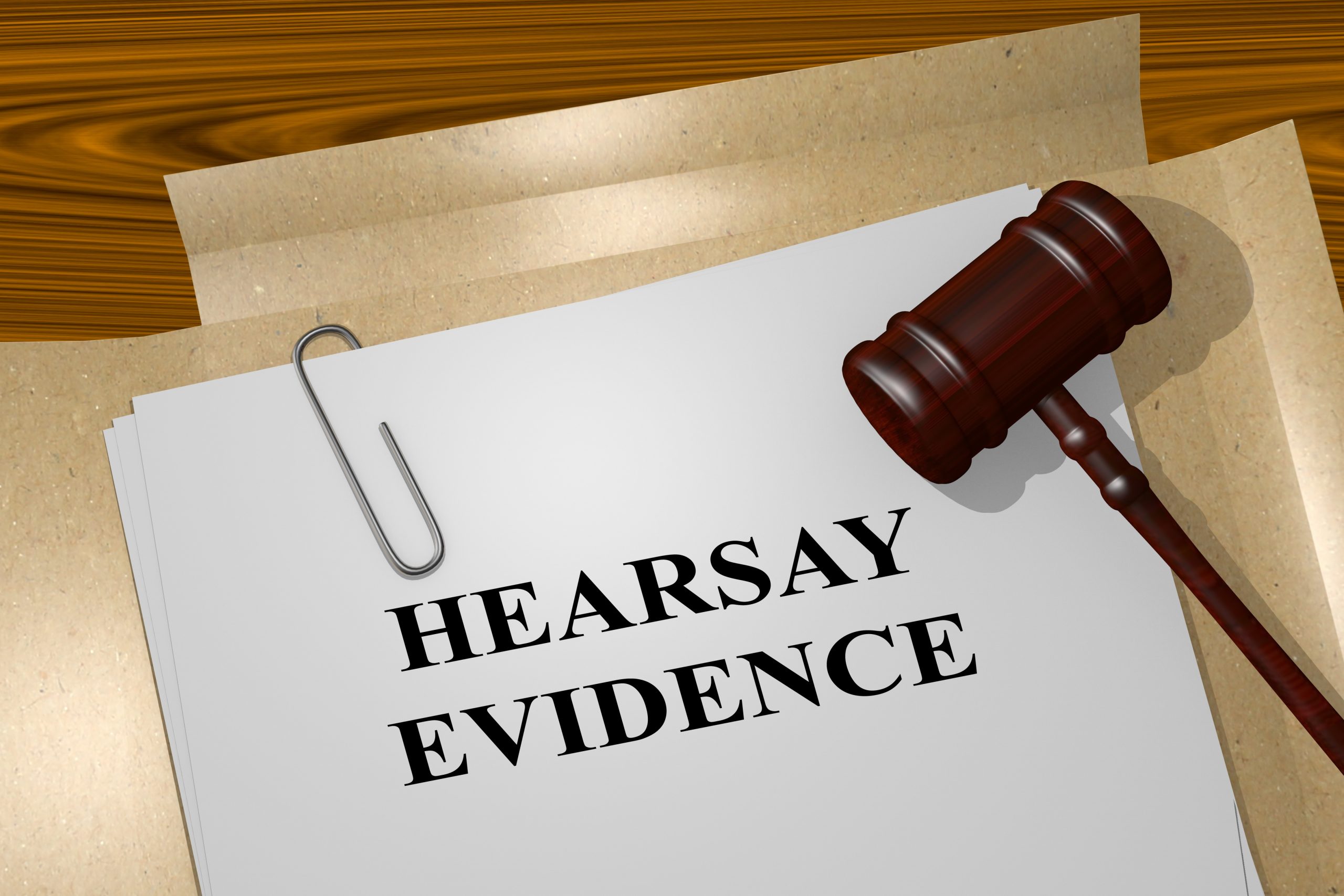 According to the Insurance Institute for Highway Safety (IIHS), in a recent year alone, there were over 1,040 motor vehicle crash-related deaths throughout New York State. Although defective vehicles and components commonly contribute to or significantly worsen many car accidents, most victims never even realize it. Collisions involving automobile defects are typically caused by dangerous vehicle designs, substandard components, and other manufacturing errors. All car designers and manufacturers have a legal duty to ensure their vehicles’ safety before marketing them to the public. This duty requires car makers to carefully inspect their vehicles for defects that could unnecessarily harm consumers. Unfortunately, some of the most prominent car companies fail to examine their vehicles adequately. Many manufacturers have even known about critical deficiencies but tried to conceal them from the public.
According to the Insurance Institute for Highway Safety (IIHS), in a recent year alone, there were over 1,040 motor vehicle crash-related deaths throughout New York State. Although defective vehicles and components commonly contribute to or significantly worsen many car accidents, most victims never even realize it. Collisions involving automobile defects are typically caused by dangerous vehicle designs, substandard components, and other manufacturing errors. All car designers and manufacturers have a legal duty to ensure their vehicles’ safety before marketing them to the public. This duty requires car makers to carefully inspect their vehicles for defects that could unnecessarily harm consumers. Unfortunately, some of the most prominent car companies fail to examine their vehicles adequately. Many manufacturers have even known about critical deficiencies but tried to conceal them from the public.
Most Common Types Of Car Defects
For an automobile to function correctly, thousands of electrical, hydraulic, and mechanical components must operate together. When even the most minor part malfunctions, the outcome can be catastrophic. For example, if faulty brake pads fail as a truck nears a red light, the truck could T-Bone another vehicle. Some frequently occurring instances of automobile defects include:
 A foodborne illness, also known as food poisoning, is any sickness caused by eating contaminated food. Over 200 diseases, from diarrhea to pancreatic cancer, are spread through tainted food. Everyone involved in the food cycle, including producers, processors, wholesalers, distributors, grocery stores, and restaurants, must take every necessary precaution to keep food safe.
A foodborne illness, also known as food poisoning, is any sickness caused by eating contaminated food. Over 200 diseases, from diarrhea to pancreatic cancer, are spread through tainted food. Everyone involved in the food cycle, including producers, processors, wholesalers, distributors, grocery stores, and restaurants, must take every necessary precaution to keep food safe.  Buffalo Personal Injury Lawyer News
Buffalo Personal Injury Lawyer News


 Suppose you or a loved one have suffered devastating injuries in an accident caused by someone else’s negligence. In that case, you must understand all of the legal options available to recover damages. Although accident victims have the right to take their injury claims to court under New York law, most lawsuits get settled without going to trial. Contrary to what most people think, only about 3 percent of all cases go to court.
Suppose you or a loved one have suffered devastating injuries in an accident caused by someone else’s negligence. In that case, you must understand all of the legal options available to recover damages. Although accident victims have the right to take their injury claims to court under New York law, most lawsuits get settled without going to trial. Contrary to what most people think, only about 3 percent of all cases go to court.  Western New Yorkers finally get a chance to enjoy some nice weather during the summer months. Many locales flock to swimming pools to cool off as the weather heats up. Pools provide an excellent way for parents to keep their kids entertained while swimming or relaxing in the sun. Unfortunately, a lovely pool day can become a tragic nightmare when pool owners fail to provide basic safety precautions or children are left unsupervised. According to the Centers for Disease Control and Prevention (CDC), around ten victims lose their lives daily in unintentional drownings. When a loved one suffers injury or drowns in a pool, the property owner can be held responsible for the damages.
Western New Yorkers finally get a chance to enjoy some nice weather during the summer months. Many locales flock to swimming pools to cool off as the weather heats up. Pools provide an excellent way for parents to keep their kids entertained while swimming or relaxing in the sun. Unfortunately, a lovely pool day can become a tragic nightmare when pool owners fail to provide basic safety precautions or children are left unsupervised. According to the Centers for Disease Control and Prevention (CDC), around ten victims lose their lives daily in unintentional drownings. When a loved one suffers injury or drowns in a pool, the property owner can be held responsible for the damages. According to the Insurance Institute for Highway Safety (IIHS), in a recent year alone, there were over 1,040 motor vehicle crash-related deaths throughout New York State. Although defective vehicles and components commonly contribute to or significantly worsen many car accidents, most victims never even realize it. Collisions involving automobile defects are typically caused by dangerous vehicle designs, substandard components, and other manufacturing errors. All car designers and manufacturers have a legal duty to ensure their vehicles’ safety before marketing them to the public. This duty requires car makers to carefully inspect their vehicles for defects that could unnecessarily harm consumers. Unfortunately, some of the most prominent car companies fail to examine their vehicles adequately. Many manufacturers have even known about critical deficiencies but tried to conceal them from the public.
According to the Insurance Institute for Highway Safety (IIHS), in a recent year alone, there were over 1,040 motor vehicle crash-related deaths throughout New York State. Although defective vehicles and components commonly contribute to or significantly worsen many car accidents, most victims never even realize it. Collisions involving automobile defects are typically caused by dangerous vehicle designs, substandard components, and other manufacturing errors. All car designers and manufacturers have a legal duty to ensure their vehicles’ safety before marketing them to the public. This duty requires car makers to carefully inspect their vehicles for defects that could unnecessarily harm consumers. Unfortunately, some of the most prominent car companies fail to examine their vehicles adequately. Many manufacturers have even known about critical deficiencies but tried to conceal them from the public.  Falls are one of the leading causes of personal injury accidents throughout the United States. While falls can happen anywhere, these accidents are especially common on stairs. Each year, more than 1 million victims injure themselves on stairways. All property owners and managers are legally obligated to keep their properties safe for tenants, visitors, and workers alike. This obligation includes inspecting and maintaining stairways and making timely repairs to potentially dangerous conditions. When a staircase accident occurs because of hazardous or improperly maintained stairs, the responsible property owner, landlord, or management company can be held liable for the victim’s damages.
Falls are one of the leading causes of personal injury accidents throughout the United States. While falls can happen anywhere, these accidents are especially common on stairs. Each year, more than 1 million victims injure themselves on stairways. All property owners and managers are legally obligated to keep their properties safe for tenants, visitors, and workers alike. This obligation includes inspecting and maintaining stairways and making timely repairs to potentially dangerous conditions. When a staircase accident occurs because of hazardous or improperly maintained stairs, the responsible property owner, landlord, or management company can be held liable for the victim’s damages.  The spinal cord is a long, cylindrical pathway that connects your brain to your lower back. It is a delicate structure composed of vertebrae, discs, nerves, and other tissues. A spinal cord injury consists of any damage to a segment of the spinal cord or nerves at the end of the cauda equina. When part of the spine gets damaged, areas of the body below the site might not receive nerve messages and suffer changes in sensation, strength, and other critical body functions. According to the National Spinal Cord Injury Statistical Center (NSCISC), a recent estimate revealed that more than 17,800 victims suffer spinal cord injuries yearly. Approximately 294,000 individuals throughout the country are currently struggling with spinal cord injuries.
The spinal cord is a long, cylindrical pathway that connects your brain to your lower back. It is a delicate structure composed of vertebrae, discs, nerves, and other tissues. A spinal cord injury consists of any damage to a segment of the spinal cord or nerves at the end of the cauda equina. When part of the spine gets damaged, areas of the body below the site might not receive nerve messages and suffer changes in sensation, strength, and other critical body functions. According to the National Spinal Cord Injury Statistical Center (NSCISC), a recent estimate revealed that more than 17,800 victims suffer spinal cord injuries yearly. Approximately 294,000 individuals throughout the country are currently struggling with spinal cord injuries.  We have all heard stories about collisions involving motorists driving towards oncoming traffic in the wrong lane. Wrong-way car accidents occur when a car driving in an inappropriate direction strikes another vehicle. Typically, wrong-way car accidents result in head-on collisions. These car crashes occur more often than most people would think and usually bring about devastating injuries and deaths. In a recent 8-year period, nearly 3,900 fatal injuries were caused by wrong-way crashes.
We have all heard stories about collisions involving motorists driving towards oncoming traffic in the wrong lane. Wrong-way car accidents occur when a car driving in an inappropriate direction strikes another vehicle. Typically, wrong-way car accidents result in head-on collisions. These car crashes occur more often than most people would think and usually bring about devastating injuries and deaths. In a recent 8-year period, nearly 3,900 fatal injuries were caused by wrong-way crashes.  Between 1953 and 1987, over one million Marines, military contractors, and their families living or working at Camp Lejeune and Marine Corps Air Station (MCAS) New River may have been exposed to toxic chemicals through water contamination. Military officials were aware of the tainted water as early as the 1950s. Still, they chose to ignore it and even failed to warn those on base. Although multidistrict litigation (MDL) was formed to streamline Camp Lejeune water claims, in 2016, a judge dismissed roughly 850 lawsuits under the Federal Torts Claims Act. Later in 2019, the Secretary of the Navy denied all remaining civil claims, which left approximately 4,500 plaintiffs with claims exceeding $963 billion in damages without compensation.
Between 1953 and 1987, over one million Marines, military contractors, and their families living or working at Camp Lejeune and Marine Corps Air Station (MCAS) New River may have been exposed to toxic chemicals through water contamination. Military officials were aware of the tainted water as early as the 1950s. Still, they chose to ignore it and even failed to warn those on base. Although multidistrict litigation (MDL) was formed to streamline Camp Lejeune water claims, in 2016, a judge dismissed roughly 850 lawsuits under the Federal Torts Claims Act. Later in 2019, the Secretary of the Navy denied all remaining civil claims, which left approximately 4,500 plaintiffs with claims exceeding $963 billion in damages without compensation.  Certain deeds, papers, and writings must be notarized to qualify as evidence of the facts therein contained. To notarize a document, it must be signed and sworn in front of a public official called a notary public. In other words, a notary public serves as an impartial witness to execute acknowledgments on important documents requiring the administration of an oath. The general authority of a notary public is outlined in NY CLS Exec § 135. In New York, notaries must be commissioned by the Secretary of State. To become licensed, applicants must be a resident or have a place of business in New York State, be at least 18 years old, submit a completed application and pay the required fee to the Department of State, and pass the NYS Notary Public Exam. A notary public’s term of commission is four years.
Certain deeds, papers, and writings must be notarized to qualify as evidence of the facts therein contained. To notarize a document, it must be signed and sworn in front of a public official called a notary public. In other words, a notary public serves as an impartial witness to execute acknowledgments on important documents requiring the administration of an oath. The general authority of a notary public is outlined in NY CLS Exec § 135. In New York, notaries must be commissioned by the Secretary of State. To become licensed, applicants must be a resident or have a place of business in New York State, be at least 18 years old, submit a completed application and pay the required fee to the Department of State, and pass the NYS Notary Public Exam. A notary public’s term of commission is four years.  By definition, hearsay is any statement made outside of court but repeated at trial to support the legitimacy of the asserted matter. The hearsay rule regulates what evidence a judge or jury can take into account at trial and can apply to both oral testimony and written documents. When a witness obtains information from someone else but did personally observe the event, unless some exception applies, that witness cannot repeat what the other person told them. Instead, the witness’s testimony must be based upon their own experience, a first-person account. In personal injury cases, the hearsay rule often has profound implications on proving legal issues, such as negligence and damages.
By definition, hearsay is any statement made outside of court but repeated at trial to support the legitimacy of the asserted matter. The hearsay rule regulates what evidence a judge or jury can take into account at trial and can apply to both oral testimony and written documents. When a witness obtains information from someone else but did personally observe the event, unless some exception applies, that witness cannot repeat what the other person told them. Instead, the witness’s testimony must be based upon their own experience, a first-person account. In personal injury cases, the hearsay rule often has profound implications on proving legal issues, such as negligence and damages.